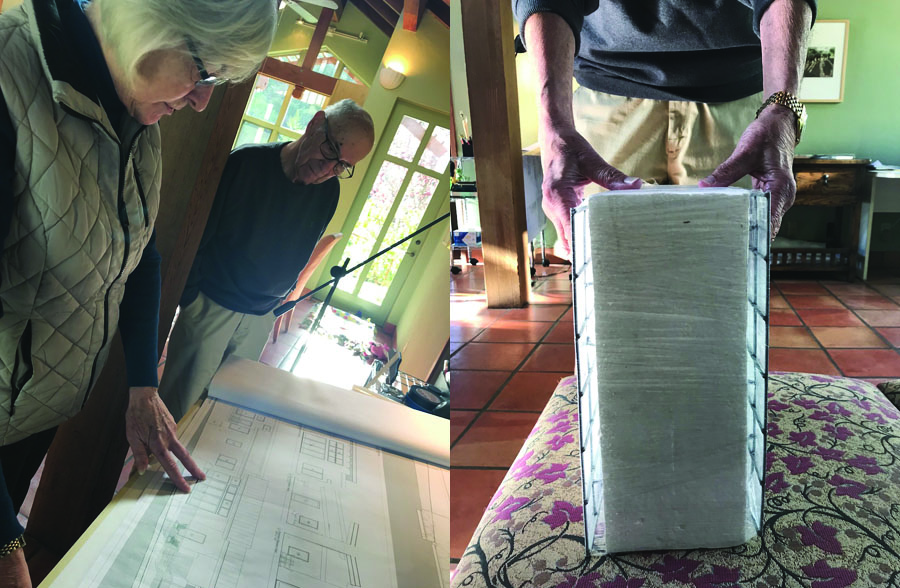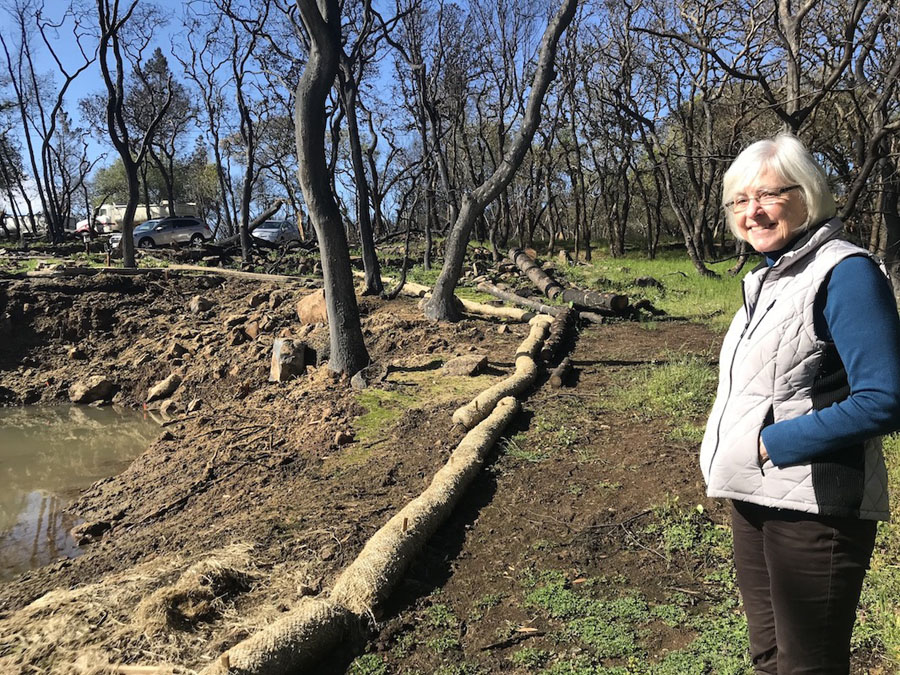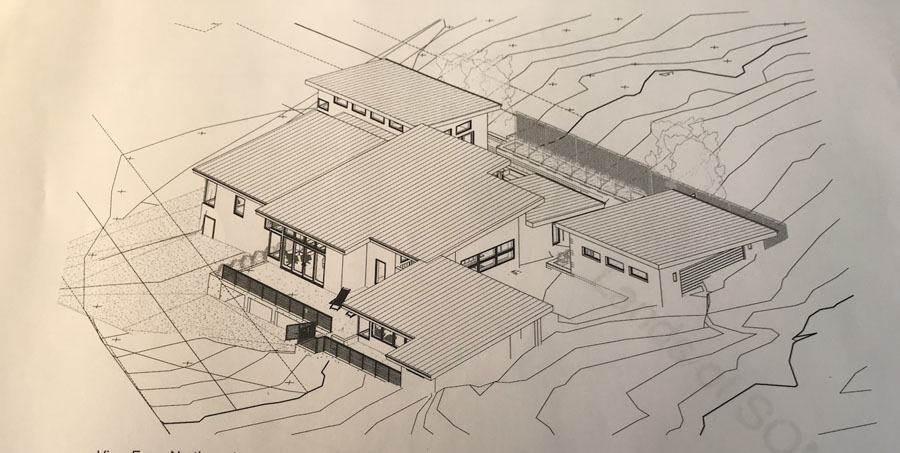By Shoshana Hebshi, Redwood Chapter Communications Coordinator
When Karen and Stan Sommer fled their home on Bennett Ridge in the early hours of Oct. 9, the flames were coming up from Annadel State Park, which borders the east end of their property. They grabbed some key items, and Karen remembers glancing at her prized artwork hanging on the walls and wishing there was room in her car to take the pieces. Stan grabbed the heirloom silver and his Leica cameras and they drove through the smoke and flying embers into Santa Rosa and safety.
They left the house they designed and built in 1973 not knowing if it would withstand the firestorm that was engulfing many parts of Santa Rosa, Kenwood and Sonoma Valley. But when they found out their house and everything in it had burned, Karen, a resourceful, level-headed retired interior designer, got straight to work on how to build a new home that would withstand the likelihood of another fire.
“This is an opportunity to put in everything that’s technically an advantage for us,” she said. “It’s an opportunity to make it right.”
Stan says the likelihood of another fire sweeping through the Ridge is high, as they live in what’s called the Wildland Urban Interface—unincorporated and largely undeveloped land in Sonoma County with high fire risk but where many homes have been built during the last 40 years. These homes face stricter building codes than regular subdivisions in cities, but the Sommers have taken these codes to new levels.
“No sticks,” Karen likes to say when referring to the building materials they are choosing. The couple has opted to employ a little-known building system called Tridipanel, which uses only wire, foam insulation and concrete to create solid structures that are fire resistant, quick to install and provide stellar insulation.
The Sommers’ architect, Sara Woodfield, suggested the Tri-D for their home, knowing the couple was keen on innovative building techniques.
“For 20 years I’ve worked with sustainable materials,” said Woodfield, who works in Santa Rosa with her firm Harrison Woodfield Architects. “I’ve done almost every single type of solid wall material, and I think this is the best there is because it’s just so easy to work with.”
The ease of the construction will keep labor costs down, and though the Tri-D is more expensive than traditional materials, which because of the fire are at a higher demand than normal, Karen said the total cost may be equivalent to building a traditional house. Even so, Karen said they would not be able to build a traditional house because of the strict building codes for WUI homes.
The Tri-D panels will be manufactured in northern Mexico and shipped up. When they arrive, a crew will install them, then cement will be sprayed or troweled on both sides of the panels. Woodfield, who is currently working on a home in Carmel Valley being built from Tri-D, said it’s a well-engineered and well-thought-out system. “It’s amazing what you can do with this,” she said, adding it cuts down about half the time of building a traditional house.
The Sommers’ house will include fire sprinklers, a metal roof, concrete floors with radiant heat, double-pane windows, steel framing, LED lighting, solar panels and iron fencing. The only wood used will be in the cabinetry. They will have ample cement outside on the patios to provide even more buffer from fire. Another couple on Bennett Ridge is using the Tri-D system, but most of the neighbors are sticking to more traditional techniques, yet using more fire-resistant material, such as concrete and metal.
Woodfield said since the fire, many people are desperate to rebuild, but she estimated only 20 percent are ready to build something different. There are emotional traumas, insurance complications and people are moving away—all of which impedes of this type of progress. “It’s a real important tipping point because all of a sudden the quality of the materials are what’s needed,” she said, adding that this fire will create new openings for people to try different materials like Tri-D and bring them into the mainstream. “We have a chance to really get good at this and hopefully do more,” she said. “It’s become clear that Sonoma County, Napa County, Lake County, that these wildfires come through, maybe it’s every 30 years, but that’s not very long when you think about rebuilding a house.”
“It’s our fear,” Stan said. “It could happen in two years, you don’t know.”
Yet, what the Sommers do know is the house they are building will stand up to whatever fire comes its way. They filed for a permit at the end of April and hope to begin construction in the summer.
“We’re building the safest house we can,” Karen said. “It makes so much sense to do this.”


